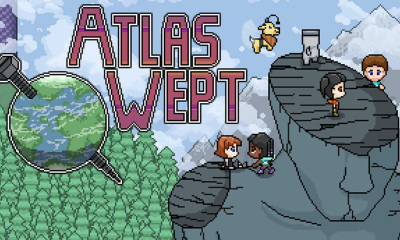Reviews
CLeM Review (PC)

Mango Protocol has just released its latest game—a puzzle-centric art piece that features an array of hand-drawn locales, and an entire web of interactive maps and intricate combinations. Aptly titled CLeM, the newly created IP brings a short but surprisingly memorable touch-and-go experience to a tapestry of mysterious characters and hidden agendas. And that’s barely scratching the surface, as I, completely unaware of what I was walking into, came to realize after less than ten minutes of whittling down its contents and pacing through its contextless biomes.
For the sake of framing it, CLeM is an independent adventure game that stems from the minds of Mango Protocol—a jack-of-all-trades firm that’s been churning out original ideas of all genres and styles for just shy of eleven years. Unlike its previous title—a beat ‘em up brawler with an Adventure Time-like aesthetic, however, CLeM is the brainchild of a new idea, and one that, quite frankly, broadens the scope of the developer’s ever-evolving vision by leaps and bounds.
If you did catch wind of the studio’s latest incarnation, and aren’t entirely sure whether or not it’s worth adding to your library, then allow us to introduce it. Let’s talk about CLeM, and how it aims to deliver a short but comprehensive journey through the eyes of a buttoned-up doll. Scoot over, Sackboy — there’s a new fish in town.
A Thirst for Knowledge…and Pockets
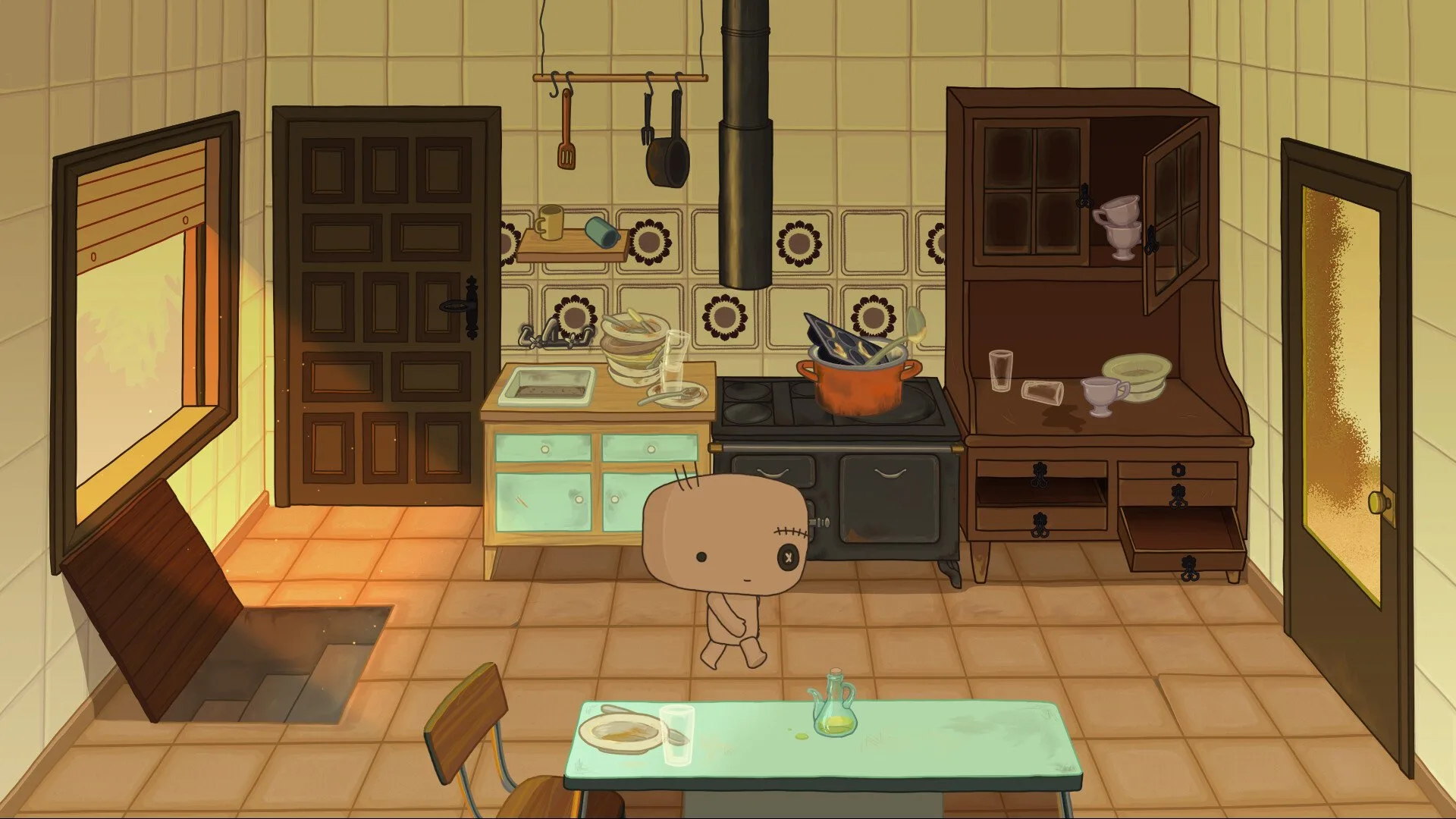
CLeM takes pride in being something of a closed book, both figuratively and literally, in the case that, even from the very beginning, you aren’t provided with any context, or even the slightest inclination of the next clue’s whereabouts, for that matter. No, things in CLeM work a little differently: it doesn’t make an effort to guide you, nor does it fill your head with copious amounts of checklists or unnecessary information. Instead, it opts for a relatively straightforward and oddly digestible opening: with a drowsy protagonist, a shady cellar, and a book depicting a series of mysterious diagrams and descriptions. The route forward from here, in a true puzzle-like fashion, lies within the secrets jotted down in the journal and the seemingly vacant corridors of the home in which you find yourself in. Somewhere, in the gloomiest shadows of the estate, a voice calls to you.
As far as introductions travel, CLeM does a surprisingly good job of painting an image and embellishing it with a whimsical yet unsettling ambiance—a setting that, even in the lightest moments, looms in the background for the duration of the story. Sure enough, its visually harmless, as is its dreamlike soundscape, but deep down, there’s an alluring sense of wonder that beckons from the other side of a locked door. It’s your duty, as a button-and-zip doll, to unlock said doors, and locate the origins of the voice—a subtle yet alluring tone that invites you to grasp “beauty” and deliver it to the heart.
To begin with, you have a book—an encyclopedia, of sorts, that contains written passages explaining certain aspects of the world and its contents. As you set foot into the rooms, these passages gradually become clearer, and for each object you examine, another page is added.
A Strong Beginning
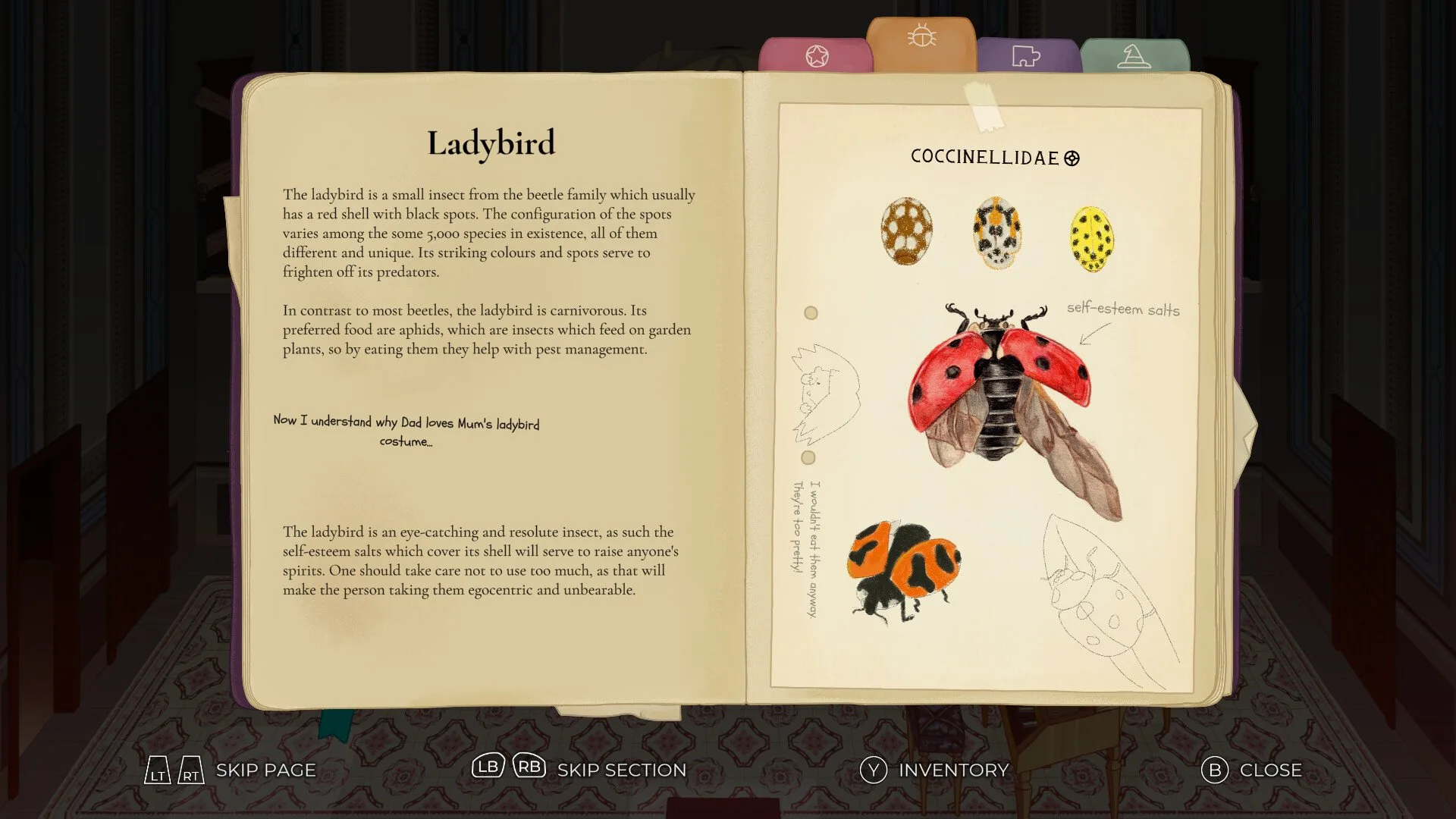
Like a lot of puzzle games that favor a lack of context, you make progress by roaming around in certain areas, and interacting with objects, paintings, and other trinkets. In order to get the ball rolling, you must fill out your journal, and then add the necessary components to the task at hand, whether it’s finding a way to seal the shutters to trap a butterfly in the kitchen, or fashioning a lens to unveil the contents of a faded diary. For the most part, it’s merely the case of finding the correct pieces, and on occasion, combining them to create a tool, or even a key to the next area of the home.
The puzzles in CLeM are clearly well-written and unique in their own sorts of ways, and diverse enough to keep your brain ticking over as you thread one node to the next. For me—a somewhat dim-witted person whose brain isn’t all that capable of producing definitive answers or strategies—I rarely struggled to locate the next clue, which often meant I was able to traipse the world and keep the narrative marching forward — even when it seemed like there was nothing left to achieve. And whilst it certainly kept me on my toes, at no point did I ever find myself in a rut and desperately clawing for a helping hand to walk me through the next portion of the puzzle.
All in all, there are only eighty or, if you’re a little slower on the puzzle-solving side of things, ninety minutes of gameplay to shovel through. Therefore, if you’re looking for something that’ll take several hours, and not, in this case, a single sitting, then you might be a little disappointed. With that said, this isn’t to say that it’s hardly worth considering.
Aesthetically on Point
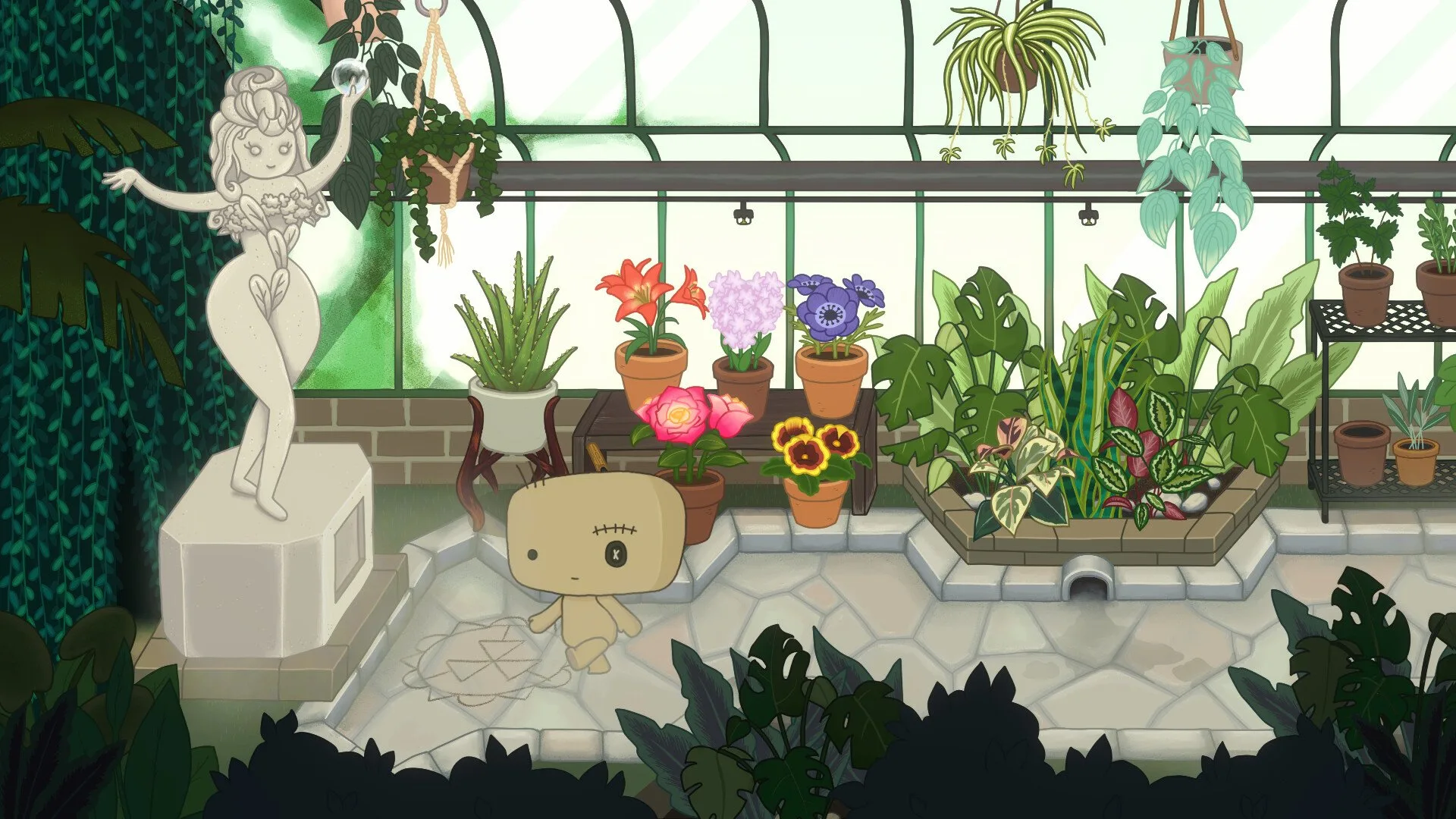
Clever puzzles and cozy hand-drawn artwork aside, CLeM does manage to provide a genuinely compelling story, and one that, whilst mostly without context, has more than enough twists and anchors to keep things ticking over and from grinding to a standstill. Again, it isn’t the bulkiest of experiences, as the lion’s share of the puzzles and documents can be glossed over and completed in an hour, maybe less. But then, in spite of its lack of depth, it still manages to cram a wealth of information and memorable stories into its core — and that isn’t something every game can pull off.
What I found interesting about CLeM, really, was its carefree approach. It wasn’t exactly slow-moving (with the exception of the character’s movement speed, that is), though it did make a habit out of allowing me to unravel the world at my own pace. Sure, it could’ve drowned itself out with drawn-out theatrics and unavoidable jargon, but instead it chose to accommodate only the basics and let me devise my own agenda. There was a story to unfold, but with the bulk of the backstory being hidden in notes and other trinkets, it was never forced down my neck, but rather, left out to analyze as and when needed.
Mango Protocol initially described the game as a “Puzzlevania”—a term that was coined to refer to its endless backtracking and item-finding aspects. And while it is, in ways, a lot like some of its adversaries that also happen to fall under the umbrella of the same category, I wouldn’t go as far as to say that it’s quite that. Nevertheless, I’m all for giving it ten points for sheer ambition alone.
Verdict
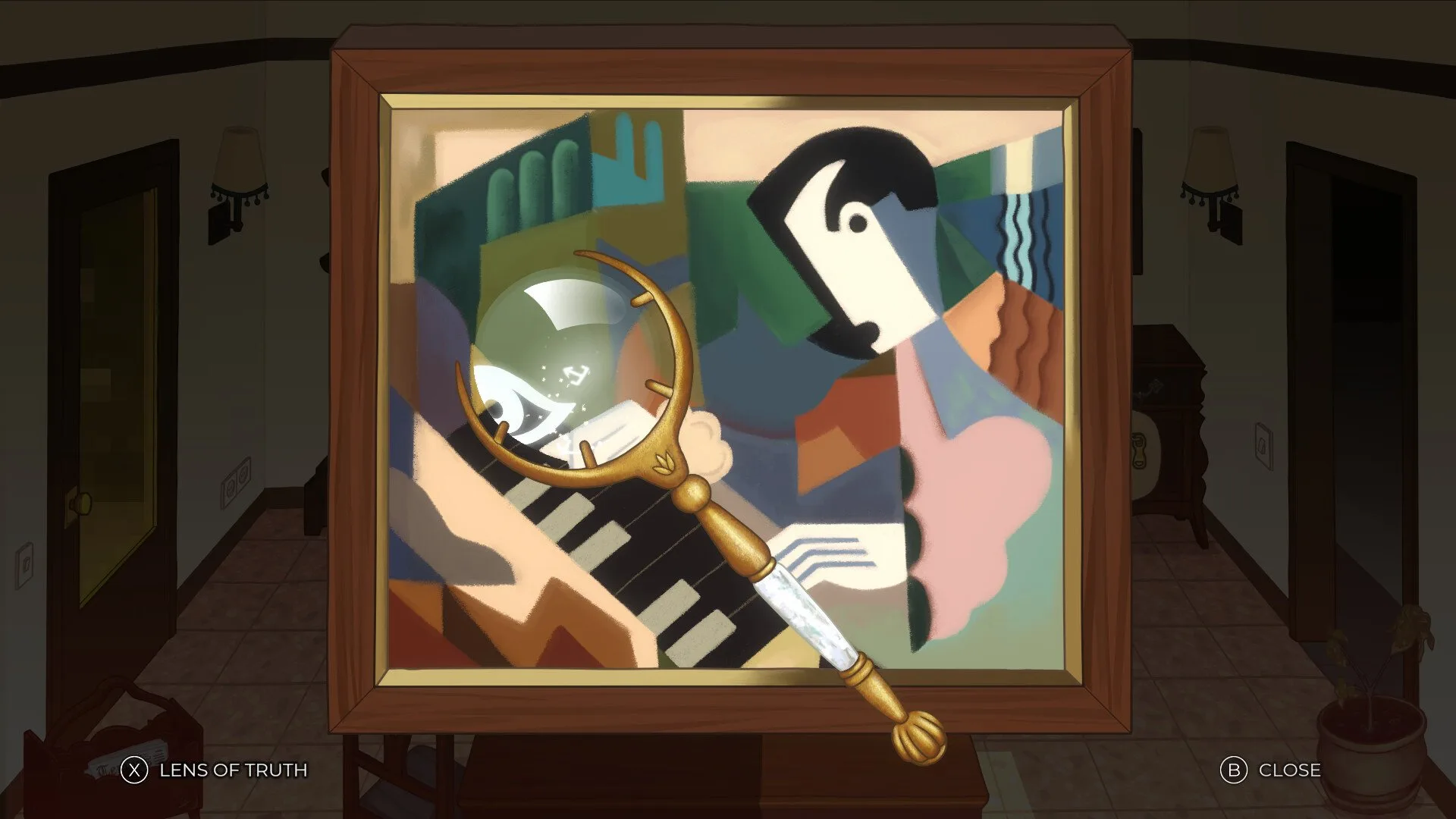
Aside from the fact that it isn’t the lengthiest puzzle game in the world, CLeM does manage to tap into plenty of great innovations and original designs. In addition to its ability to spin a compelling yarn for a seemingly faceless narrative, it also provides a solid collection of thought-provoking curveballs and environmental challenges, too. Add the fact that it also delivers a soundboard that captures the ambiance of a mystery-trodden world and all its crags and crevices, and it’s easy to see why CLeM is quickly becoming a new bookmark for like-minded players.
If CLeM happened to sport a ludicrously high price tag on arrival, then I might’ve brushed over it and opted for an alternative world to plant roots in. However, with the price of admission being just short of $15, I wasn’t about to let it slip between my fingers — and I’m glad that I acted on impulse, to be fair. Granted, I wasn’t entirely sure what I was throwing myself into, but I’m glad I was able to experience it — whatever “it” was.
To answer the question, is CLeM worth picking up? Yes, it is, and not just for its treasure trove of unique puzzles and character designs, but for its whimsical soundtrack and natural ability to compel its audience into wanting to go even deeper into its world and unravel its inner secrets. The bottom line here is this: if you’re itching for a short romp through a hearty indie that’s filled to the brim with character and lore, then you’d better make CLeM the next place to drop an anchor.
CLeM Review (PC)
Short and Hearty
CLeM lays the foundations for a puzzle-heavy world that’s both atmospherically on point and absolutely bursting at the seams with original ideas and environmental curveballs. It isn’t the longest game in the world, true, but it’s certainly one that’ll give you something to talk about in years to come.


